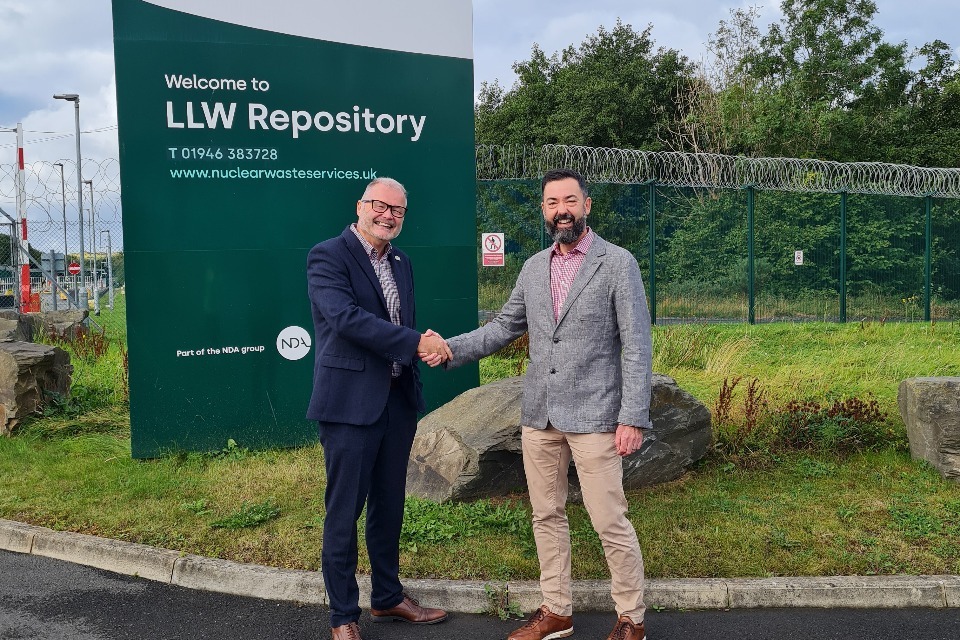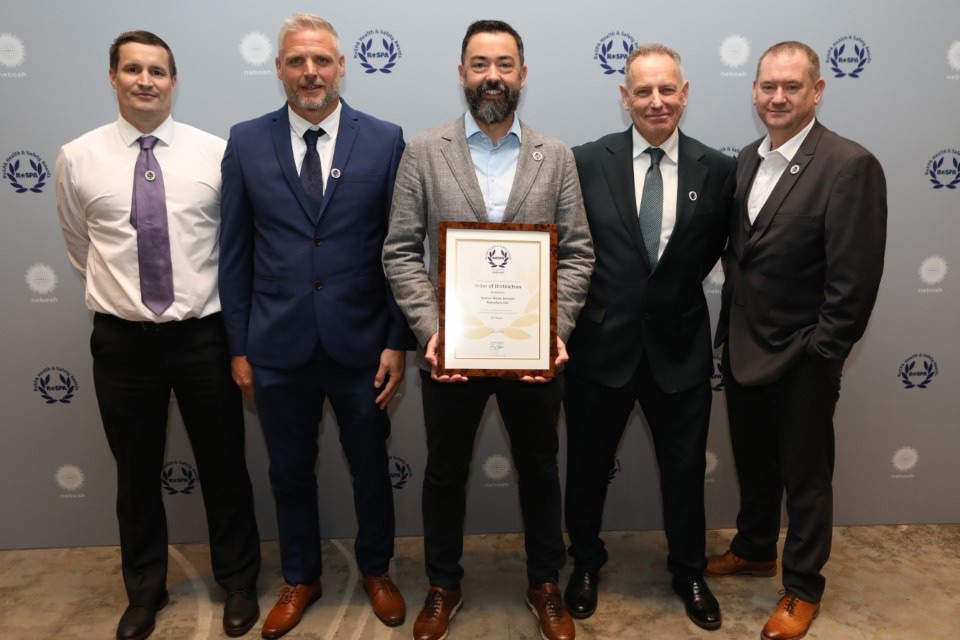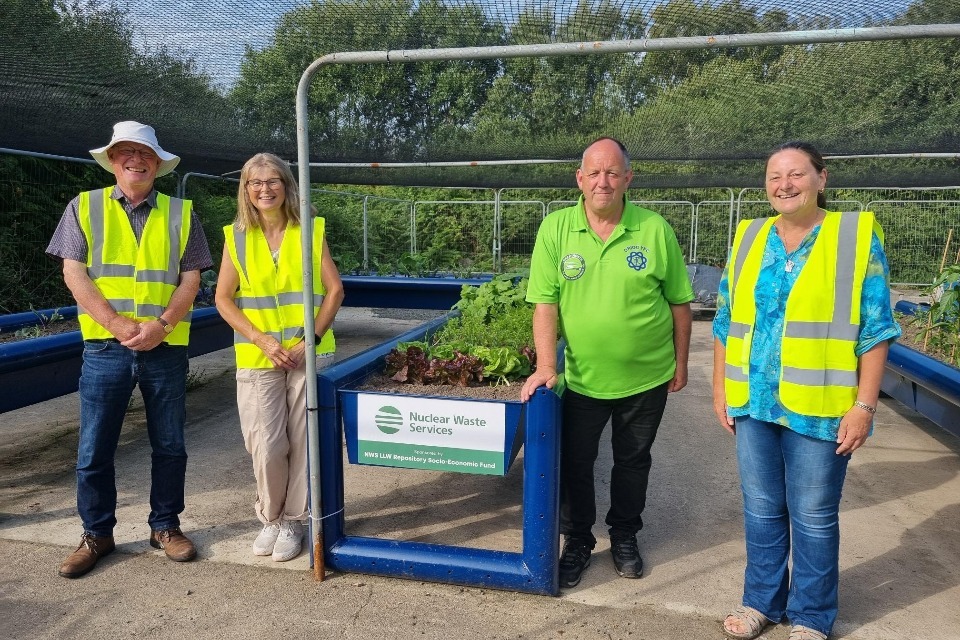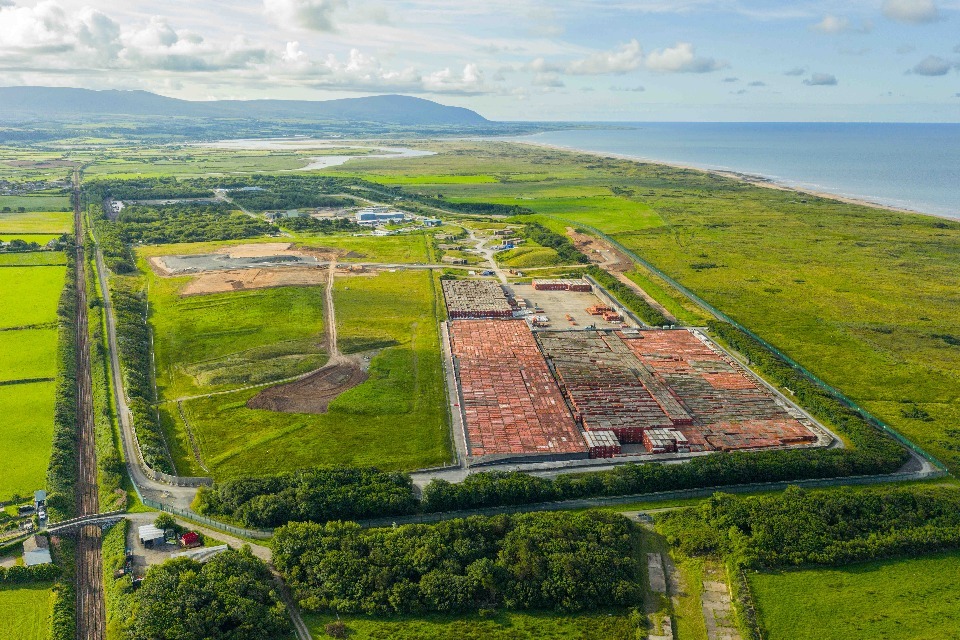On the Level September 2025, issue 43
Published 26 September 2025
Leadership changes at the Repository site

Martin Walkingshaw and Mike Pigott
There’s been a change in leadership at the LLW Repository site. Martin Walkingshaw, who has served as Chief Operating Officer for many years, has stepped down from his role as he prepares for semi-retirement.
Martin has been a familiar face to many in the community and played a key part in shaping the site’s direction. Mike Pigott, Executive Director of Sites and Operations, will continue to lead the site and join the NWS Executive team.
Mike has already made it clear that listening to local voices and maintaining transparency will be central to his approach:
We’re here to do more than just deliver our mission, we’re here to be considerate neighbours, to listen, and to make sure our work supports and respects the community around us.
And it’s farewell from Martin…
“It’s been a busy time at NWS, especially at the Repository site, where capping work is progressing well. I’m grateful for the continued encouragement from Drigg and Carleton Parish Council and our village neighbours to ‘get on with it’!
Alongside this, our work on the UK’s Geological Disposal Facility (GDF) is moving forward, with environmental surveys now under way following the earlier announcement of ‘areas of focus’.
Balancing operations and major projects has been a rewarding challenge, but I’m ready for a change so I’ll be stepping down as NWS Chief Operating Officer at the end of September. The COO role won’t be replaced – instead we’re appointing two new Executive Directors reporting to our CEO Seth Kybird, one for Repository operations and one for the GDF programme.
I’m pleased to share that Mike Pigott will be our Executive Director of Sites and Operations, and we’re progressing with the GDF appointment. I’ll be handing over my Senior Responsible Owner (SRO) responsibilities for the GDF to Seth and I’ve agreed to stay on in a part-time advisory role to support the transition. So, it’s semi-retirement for now!
I’m looking forward to more time at home in Seascale with my wife, Bronwen, our family and friends. I’ll continue as a Board Member of Carer Support West Cumbria and was delighted to recently receive an invitation to join the Board of Trustees at People First in Carlisle – two fantastic organisations doing vital work across Cumbria.
After 43 years in the nuclear industry, I can honestly say working to solve the waste challenge with the Repository and GDF teams has been the most fulfilling part of my career. Most of all, I’ve enjoyed developing a stronger partnership with the West Cumbrian community that I’m a proud member of, and together we’ve delivered really significant changes in the way the UK manages its radioactive waste.
Finally, a heartfelt thank you to everyone at the Repository site, Pelham House, and Harwell. It’s been a privilege to serve as CEO of LLWR, COO of NWS, and SRO for a major Government programme. Any success I’ve had is thanks to the incredible team around me – I wish you all the very best.”
LLWR site wins 20th RoSPA Gold Award

The Repository site is recognised with a 20th consecutive RoSPA Gold Award
The Repository site has once again been recognised for its commitment to safety, receiving our 20th consecutive Gold Award from the Royal Society for the Prevention of Accidents (RoSPA). The site also earned the prestigious Order of Distinction.
This award celebrates excellence in health and safety across all areas of site operations, including construction, electrical work, and confined space entry. It’s a testament to the hard work and vigilance of everyone involved and further reassurance for our local community that we never compromise on safety.
STIM and capping safely hitting major milestones

A delivery of aggregate arrives at the Repository site via rail
Since our previous newsletter, we’ve made significant progress on the Southern Trench Interim Membrane (STIM) and capping works. This is a key phase in the long-term capping and closure of the Repository site.
A significant achievement this month has been the completion of our second rail delivery campaign. We have now received a total of 161 train deliveries of aggregate materials (like sand, soil, rocks and stones) to the site.
Using rail instead of road has saved 7,037 lorry journeys and 914,781 road miles, helping to reduce traffic and minimising disruption for local residents. The team has also installed extra noise and dust monitors, we’re using water tankers daily to keep dust levels down, and we’ve added noise reduction liners to our tipper trucks.
STIM involves replacing the protective membrane (or liner) over the southern part of the legacy waste disposal trenches, and we’ve laid more than 30,000 square metres of the liner so far, around 25% of the total area (roughly the same as four football pitches). The work is being carried out in seasonal campaigns (typically March - September) as the installation of the liner is weather dependent.
The current phase is expected to continue through to early 2028, with the final capping phase to follow.
The Environment Agency continues to work closely with the site team to ensure all progress meets regulatory and quality standards. Looking ahead, we’ll start constructing a new screening bund in autumn. This will help block the view and reduce noise from future stockpiling activities.
And this month we welcomed local residents to the Repository site for a tour, alongside our STIM drop-in events at Drigg Village Hall. More on this in our next newsletter.
Funding boosts local projects and events

License to grow receives funding from the LLWR socio-economic fund
The Licence to Grow initiative has transformed the old council tip in Drigg into a vibrant community growing space. We were pleased to provide funding towards raised beds and planters for vegetables and flowers. The planters were built by Haverigg Prison, adding a social value dimension to the project, while produce from the garden will be used at the Drigg Warm Hub over winter.
At Drigg Village Hall, weathered history boards have had an update. The Parish Council is also creating new boards for Drigg beach, focusing on nature and ecology, with the updated artwork and production of the boards being covered by our funding.
The Drigg and Carleton Gala was another highlight, bringing the community together with NWS providing the marquee for the event. Young people have been getting involved too. Students from Cumbria Youth Alliance (CYA) visited the site for workshops on CV writing, and joined our sustainability team to carry out some environmental monitoring. In the last six months we have also supported local events including Calder Fest and Pride by the Harbourside, both of which celebrated diversity and community spirit.
The Socio-economic Fund is open to groups within 30 miles of the Repository site. Visit LLWR’s Socio-economic Fund to apply.
Infrastructure improvements continue
Work continues to improve infrastructure and environmental management across the Repository site. Substation 3 has been upgraded and is now back on mains power, reducing our reliance on generators. The Leachate Management System has also been enhanced, so we can continue to prevent environmental contamination and protect the surrounding environment.
Rare Wasp Discovery
Our Ecologist Chris Arthur recently identified a rare Ichneumonid wasp (Lissonota setosa) at the Repository site, confirmed with help from experts in Liverpool and Sweden. This species uses the elusive Goat Moth as a host, which hasn’t been recorded in Cumbria for over 40 years. We’ve recorded several types of wasps this year, and their presence is a reminder of the surprising biodiversity around the Repository site.
New contracts see increase in activity on site

The LLW Repository site
Several new contracts have been awarded recently, including for site works, design and engineering, and a major civils contract. These will support ongoing waste management and infrastructure improvements across the Repository.
With only Cumbrian suppliers eligible, Workington-based Stobbarts Ltd secured the Civils and Infrastructure contract for site works creating jobs, apprenticeships, and training opportunities for the local community.
With increased activity on site, the team is taking extra steps to monitor noise and HGV movements. Communication with residents remains a priority, and the site team is committed to keeping everyone informed through our website, newsletters, mail drops and the Parish Council.
You can get in touch with us by emailing us at info@nuclearwasteservices.uk if you have any questions.
Bird surveys begin along West Cumbria coastline

Red-throated diver in winter plumage
Nuclear Waste Services has launched wintering bird surveys along the West Cumbria coast, following two years of aerial monitoring. These ground-based surveys will complement the aerial data and help track bird movements and behaviours between Sellafield and Haverigg.
The findings will support environmental assessments for future investigations into the area’s suitability for a Geological Disposal Facility (GDF). The surveys reflect our commitment to understanding and protecting the local ecosystem, ensuring any future work considers potential impacts on wildlife and includes appropriate mitigation measures.
You can read more and keep up with GDF updates on our website

